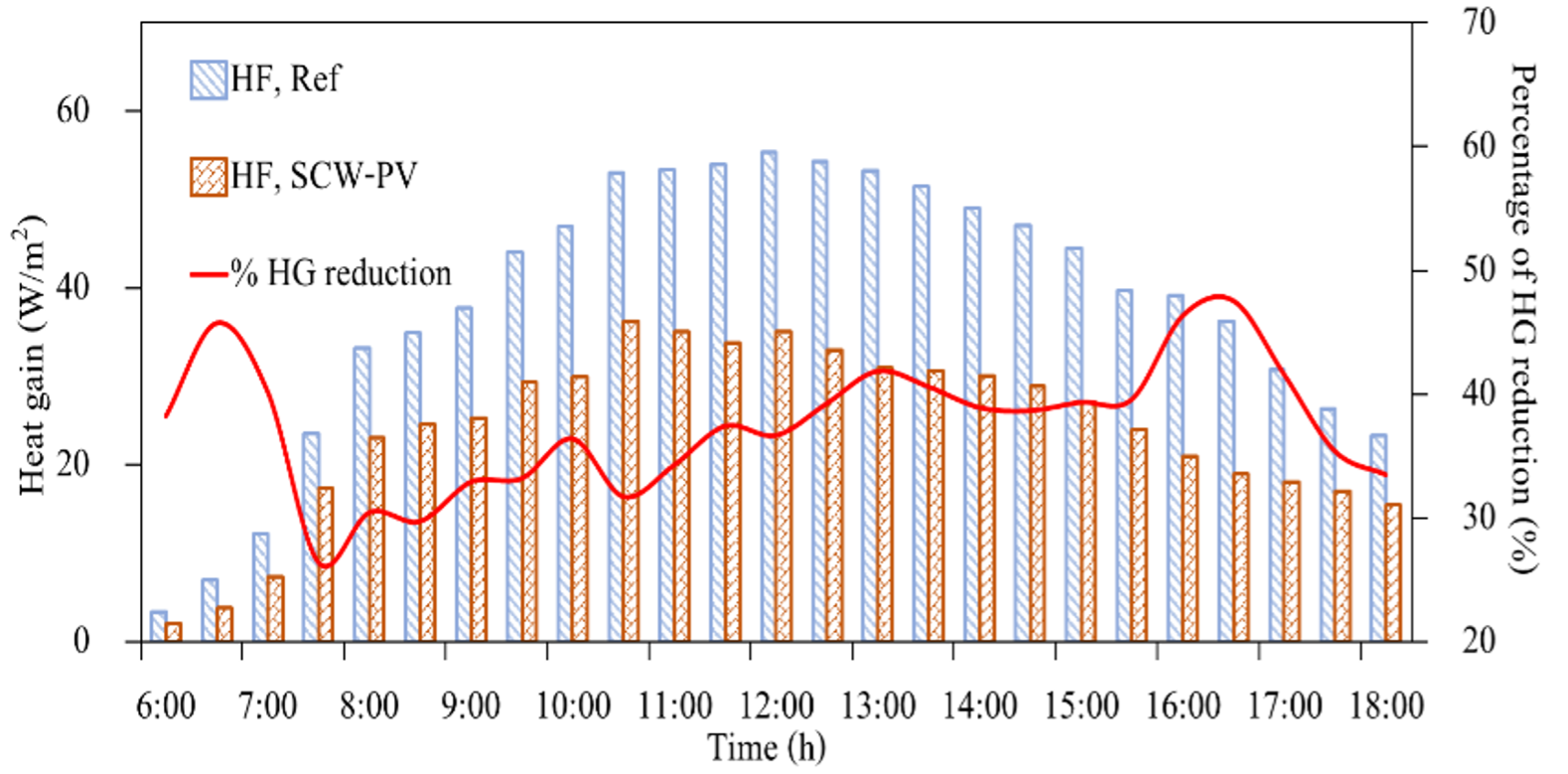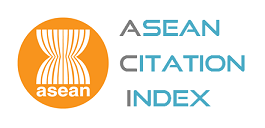Heat gain reduction using solar chimney window driven by pv-powered fan
DOI:
https://doi.org/10.55674/cs.v17i1.258241Keywords:
Solar chimney window, PV-powered fan, Heat gain, Ventilation rate, Number of air changeAbstract
This study investigated the performance of a solar chimney window equipped with a PV-powered fan (SCW-PV) in reducing heat gain and improving ventilation in buildings. The research methodology involved comparative testing of two houses: one with a common glazed window (reference) and the other with the SCW-PV installed. The SCW-PV consisted of two glass layers with an aluminum frame, vents at the top and bottom, and a DC fan connected to a PV panel without a battery. This field test investigated the variables of temperature and heat transfer reduction, with data collected during daytime hours on clear-sky days. Temperature, heat flux, and air velocity sensors were calibrated and recorded the data. Results showed that the SCW-PV effectively lowered the room space temperature compared to the common glazed window, reducing window heat gain by 10 – 20 W/m2 (15 – 55% reduction). The ventilation rate through the SCW-PV ranged from 15 – 50 m3/h, corresponding to 5.2 – 17.4 air changes per hour (ACH) in the 2.88 m3 room. The findings suggest that the SCW-PV is a significant tool for reducing window heat gain, minimizing heat accumulation in room spaces, and improving indoor thermal comfort. Therefore, the SCW-PV is recommended for implementation in buildings to enhance energy efficiency and occupant comfort.
GRAPHICAL ABSTRACT

HIGHLIGHTS
- Heat Gain Reduction: Achieved a 10-20 W/m² reduction in window heat gain, equating to a 15-55% decrease.
- Ventilation Improvement: Ventilation rate through the SCW-PV ranged from 15-50 m³/h, resulting in 5.2-17.4 air changes per hour (ACH) in a 2.88 m³ room.
References
X. Cao, X. Dai, J. Liu, Building energy-consumption status worldwide and the state-of-the-art technologies for zero-energy buildings during the past decade, Energy Build. 128 (2016) 198–213. 10.1016/j.enbuild.2016.06.089.
S. Mirrahimi, M.F. Mohamed, L.C. Haw, N.L.N. Ibrahim, W.F.M. Yusoff, A. Aflaki, The effect of building envelope on the thermal comfort and energy saving for high-rise buildings in hot-humid climate, Renew. Sustain. Energy Rev. 53 (2016) 1508–1519. 10.1016/j.rser.2015.09.055.
Department of Alternative Energy Development and Efficiency, Ministry of Energy, Thailand energy status report January - December 2023, Department of Alternative Energy Development and Efficiency, Bangkok, 2024.
S. Yang, H.M. Cho, B.Y. Yun, T. Hong, S. Kim, Energy usage and cost analysis of passive thermal retrofits for low-rise residential buildings in Seoul, Renew. Sustain. Energy Rev. 151 (2021) Article 111617. 10.1016/j.rser.2021.111617.
S. Mirrahimi, M.F. Mohamed, L.C. Haw, N.L.N. Ibrahim, W.F.M. Yusoff, A. Aflaki, Building envelopes in high-rise buildings: Effects on energy use and comfort, Renew. Sustain. Energy Rev. 53 (2016) 692–704.
Y. An, S. Feng, L. Wang, L. Liu, Y. Su, A study on multi-function window with ventilation and solar blinds to improve indoor air quality and reduce energy consumption, Energy Build. 199 (2019) 1–9.
J. Jung, D. Kang, S. Kim, Development of a multifunctional smart window combining PV blinds and ventilation system, Energy Build. 204 (2019) 109481.
M. Mehdizadeh, M. Azimi, M. Mohammadi, Thermal and optical properties of energy-efficient windows: U-value, g-value, TSET, and solar factor, Build. Environ. 207 (2022) 108404.
S. Qudama, A. Hasan, S. Halim, Integrating phase change material and natural night ventilation for indoor comfort in hot areas, Energy Build. 238 (2023) 110838.
S. Park, H. Lee, D. Lee, Predicting occupant behavior for natural ventilation using Random Forest algorithm, Energy Build. 261 (2023) 111942.
M.J. Moghaddam, M. Ghobadi, H. Farzaneh, Experimental methods for accurate assessment of solar heat gain coefficient (SHGC), Sol. Energy Mater. Sol. Cells. 241 (2023) 111733.
S. Mustafa, S. Ahmad, H. Ali, Optimizing window angle and shading projection using a genetic algorithm to reduce cooling load, Energy. 264 (2023) 125502.
Y. Tao, L. Wang, J. Yang, Theoretical model for naturally ventilated double-skin façade considering radiation and convection coupling, Appl. Therm. Eng. 196 (2023) 117380.
J.S. Carlos, Improving thermal resistance and heat loss through ventilation in windows, J. Build. Phys. (2023).
L. Tanachaikhan, S. Kumar, A simple control method for daylighting in passive solar design: A case study of Bangkok, Thailand, in: Proceedings of the Society of Instrument and Control Engineers of Japan, 2008, 10.1109/SICE.2008.4655132.
J. Ratanachotinun, P. Pairojn, A feasibility study of glass solar chimney wall for tropical area, case study: Bangkok, Thailand, Int. Energy J. 14 (2014) 95-106.
N. Chimres, S. Wongwises, Critical review of the current status of solar energy in Thailand, Renew. Sustain. Energy Rev. 56 (2016) 341–347. 10.1016/J.RSER.2015.11. 005.
A. Chaianong, C. Pharino, Outlook and challenges for promoting solar photovoltaic rooftops in Thailand, Renew. Sustain. Energy Rev. 48 (2015) 356–369. 10.1016/J.RSER.2015.04.042.
A. Chaianong, An analysis for promoting residential-scale solar photovoltaic (PV) in Bangkok, Thailand, Master’s thesis, The University of Texas at Austin, 2015.

Downloads
Published
How to Cite
Issue
Section
Categories
License
Copyright (c) 2024 Creative Science

This work is licensed under a Creative Commons Attribution-NonCommercial-NoDerivatives 4.0 International License.






